-
 Characterizing Satellite Geometry via Accelerated 3D Gaussian Splatting
Characterizing Satellite Geometry via Accelerated 3D Gaussian Splatting -
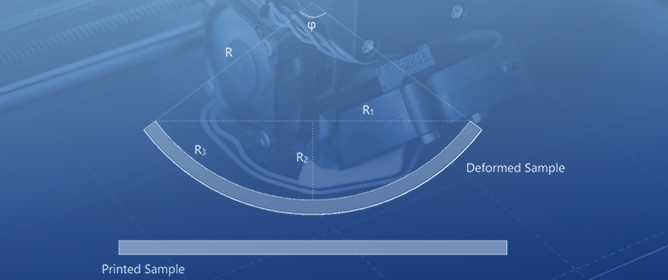 Shape Morphing of 4D-Printed Polylactic Acid Structures under Thermal Stimuli: An Experimental and Finite Element Analysis
Shape Morphing of 4D-Printed Polylactic Acid Structures under Thermal Stimuli: An Experimental and Finite Element Analysis -
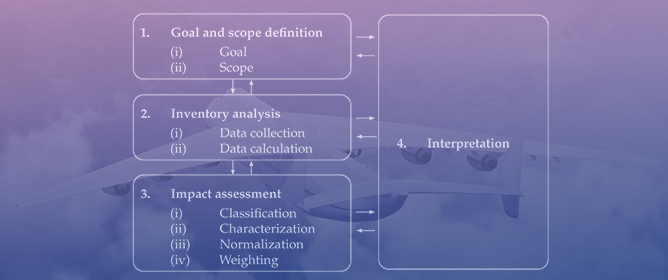 Integrating Life Cycle Assessment in Conceptual Aircraft Design: A Comparative Tool Analysis
Integrating Life Cycle Assessment in Conceptual Aircraft Design: A Comparative Tool Analysis -
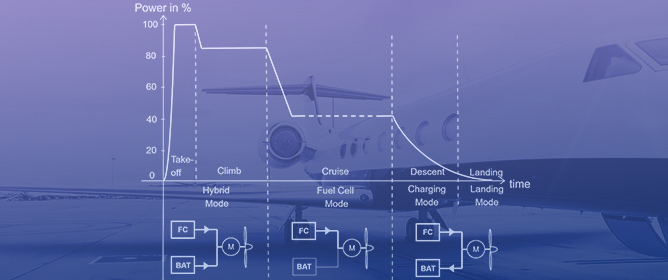 Switching Logic for a Direct Hybrid Electric Powertrain
Switching Logic for a Direct Hybrid Electric Powertrain
Journal Description
Aerospace
Aerospace
is a peer-reviewed, open access journal of aeronautics and astronautics published monthly online by MDPI. The European Aeronautics Science Network (EASN), and the ECATS International Association are affiliated with Aerospace and their members receive a discount on the article processing charges.
- Open Access— free for readers, with article processing charges (APC) paid by authors or their institutions.
- High Visibility: indexed within Scopus, SCIE (Web of Science), Inspec, and other databases.
- Journal Rank: JCR - Q1 (Engineering, Aerospace) / CiteScore - Q2 (Aerospace Engineering)
- Rapid Publication: manuscripts are peer-reviewed and a first decision is provided to authors approximately 22.3 days after submission; acceptance to publication is undertaken in 2.7 days (median values for papers published in this journal in the second half of 2023).
- Recognition of Reviewers: reviewers who provide timely, thorough peer-review reports receive vouchers entitling them to a discount on the APC of their next publication in any MDPI journal, in appreciation of the work done.
- Companion journal: Astronomy.
Impact Factor:
2.6 (2022);
5-Year Impact Factor:
2.6 (2022)
Latest Articles
Empirical Modeling of Subcritical Hopf Bifurcation of Thermoacoustic Stirling Engine
Aerospace 2024, 11(5), 347; https://0-doi-org.brum.beds.ac.uk/10.3390/aerospace11050347 - 26 Apr 2024
Abstract
This study models the subcritical Hopf bifurcation in thermoacoustic Stirling engines using the Stuart–Landau model, highlighting the role of nonlinear dynamics. By inducing self-sustained oscillations and measuring pressure fluctuations across different temperature gradients imposed on the regenerator, we reveal the engine’s transition to
[...] Read more.
This study models the subcritical Hopf bifurcation in thermoacoustic Stirling engines using the Stuart–Landau model, highlighting the role of nonlinear dynamics. By inducing self-sustained oscillations and measuring pressure fluctuations across different temperature gradients imposed on the regenerator, we reveal the engine’s transition to a nonlinear domain, characterized by heightened oscillation amplitudes and unique periodic patterns. Interpreted Landau constants and growth rates illuminate the stabilizing effects of nonlinear dynamics, demonstrating the Stuart–Landau model’s applicability in thermoacoustic engine analysis. Our research confirms that this empirically refined model reliably describes oscillation amplitudes and transient phenomena, contributing valuable perspectives for advancing thermoacoustic engine design and operational understanding.
Full article
(This article belongs to the Special Issue Predicting the Onset and Control of Thermoacoustics)
Open AccessArticle
Damage Effects and Mechanisms of High-Power Microwaves on Double Heterojunction GaN HEMT
by
Zhenyang Ma, Dexu Liu, Shun Yuan, Zhaobin Duan and Zhijun Wu
Aerospace 2024, 11(5), 346; https://0-doi-org.brum.beds.ac.uk/10.3390/aerospace11050346 - 26 Apr 2024
Abstract
In this paper, simulation modeling was carried out using Sentaurus Technology Computer-Aided Design. Two types of high electron mobility transistors (HEMT), an AlGaN/GaN/AlGaN double heterojunction and AlGaN/GaN single heterojunction, were designed and compared. The breakdown characteristics and damage mechanisms of the two
[...] Read more.
In this paper, simulation modeling was carried out using Sentaurus Technology Computer-Aided Design. Two types of high electron mobility transistors (HEMT), an AlGaN/GaN/AlGaN double heterojunction and AlGaN/GaN single heterojunction, were designed and compared. The breakdown characteristics and damage mechanisms of the two devices under the injection of high-power microwaves (HPM) were studied. The variation in current density and peak temperature inside the device was analyzed. The effect of Al components at different layers of the device on the breakdown of HEMTs is discussed. The effect and law of the power damage threshold versus pulse width when the device was subjected to HPM signals was verified. It was shown that the GaN HEMT was prone to thermal breakdown below the gate, near the carrier channels. A moderate increase in the Al component can effectively increased the breakdown voltage of the device. Compared with the single heterojunction, the double heterojunction HEMT devices were more sensitive to Al components. The high domain-limiting characteristics effectively inhibited the overflow of channel electrons into the buffer layer, which in turn regulated the current density inside the device and improved the temperature distribution. The leakage current was reduced and the device switching characteristics and breakdown voltage were improved. Moreover, the double heterojunction device had little effect on HPM power damage and high damage resistance. Therefore, a theoretical foundation is proposed in this paper, indicating that double heterojunction devices are more stable compared to single heterojunction devices and are more suitable for applications in aviation equipment operating in high-frequency and high-voltage environments. In addition, double heterojunction GaN devices have higher radiation resistance than SiC devices of the same generation.
Full article
(This article belongs to the Special Issue Lab-on-a-Chip Devices and Systems for Microgravity Simulation and Aerospace Applications)
Open AccessArticle
Rapid Tracking Satellite Servo Control for Three-Axis Satcom-on-the-Move Antenna
by
Jiao Ren, Xiaoxiang Ji, Lei Han, Jianghong Li, Shubiao Song and Yafeng Wu
Aerospace 2024, 11(5), 345; https://0-doi-org.brum.beds.ac.uk/10.3390/aerospace11050345 - 26 Apr 2024
Abstract
►▼
Show Figures
To overcome the possible gimbal lock problem of the dual-axis satcom-on-the-move (SOTM) antenna, a three-axis tracking satellite SOTM antenna structure appears. The three-axis SOTM antenna is realized by adding a roll axis to the azimuth axis and pitch axis in the dual-axis SOTM
[...] Read more.
To overcome the possible gimbal lock problem of the dual-axis satcom-on-the-move (SOTM) antenna, a three-axis tracking satellite SOTM antenna structure appears. The three-axis SOTM antenna is realized by adding a roll axis to the azimuth axis and pitch axis in the dual-axis SOTM structure. There is coupling among the azimuth axis, pitch axis and roll axis in the mechanical structure of the three-axis SOTM antenna, which makes the kinematic modeling of the antenna difficult. This paper introduces a three-axis SOTM antenna kinematic modeling method based on the modified Denavit–Hartenberg (MDH) method, named the new modified Denavit–Hartenberg (NMDH) method. In order to meet the modeling requirements of the MDH method, the NMDH method adds virtual coordinate systems and auxiliary coordinate systems to the three-axis SOTM antenna and obtains the kinematic model of the three-axis SOTM antenna. During the motion of the carrier, the SOTM antenna needs to adjust the antenna pointing in real time according to the changes of the location and attitude of the moving carrier. Therefore, this paper designs a servo control system based on the active disturbance rejection controller (ADRC), introducing a smooth and continuous ADRC
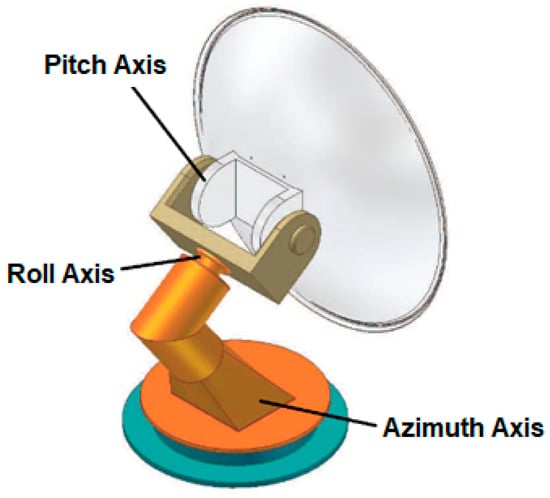
Figure 1
Open AccessArticle
DBO-CNN-BiLSTM: Dung Beetle Optimization Algorithm-Based Thrust Estimation for Micro-Aero Engine
by
Baijun Lei, Haozhong Huang, Guixin Chen, Jianguo Liang and Huigui Long
Aerospace 2024, 11(5), 344; https://0-doi-org.brum.beds.ac.uk/10.3390/aerospace11050344 - 26 Apr 2024
Abstract
►▼
Show Figures
Thrust constitutes a pivotal performance parameter for aircraft engines. Thrust, being an indispensable parameter in control systems, has garnered significant attention, prompting numerous scholars to propose various methods and algorithms for its estimation. However, research methods for estimating the thrust of the micro-turbojet
[...] Read more.
Thrust constitutes a pivotal performance parameter for aircraft engines. Thrust, being an indispensable parameter in control systems, has garnered significant attention, prompting numerous scholars to propose various methods and algorithms for its estimation. However, research methods for estimating the thrust of the micro-turbojet engines used in unmanned aerial vehicles are relatively scarce. Therefore, this paper proposes a thrust estimator for micro-turbojet engines based on DBO (dung beetle optimization) utilizing bidirectional long short-term memory (BiLSTM) and a convolutional neural network (CNN). Furthermore, the efficacy of the proposed model is further validated through comparative analysis with others in this paper.
Full article

Figure 1
Open AccessArticle
Flight Trainee Performance Evaluation Using Gradient Boosting Decision Tree, Particle Swarm Optimization, and Convolutional Neural Network (GBDT-PSO-CNN) in Simulated Flights
by
Lei Shang, Haibo Wang, Haiqing Si, Yonghu Wang, Ting Pan, Haibo Liu and Yixuan Li
Aerospace 2024, 11(5), 343; https://0-doi-org.brum.beds.ac.uk/10.3390/aerospace11050343 - 25 Apr 2024
Abstract
Flight simulation training is one of the most important methods in early-stage civil aviation flight training. In this regard, flight simulation competitions are effective tools for evaluating the flight skills of trainees. In this study, a model is developed for evaluating the flight
[...] Read more.
Flight simulation training is one of the most important methods in early-stage civil aviation flight training. In this regard, flight simulation competitions are effective tools for evaluating the flight skills of trainees. In this study, a model is developed for evaluating the flight skills of trainees by integrating GBDT (Gradient Boosting Decision Tree), PSO (Particle Swarm Optimization), and CNNs (Convolutional Neural Networks). Flight data from simulations is employed for model training. Initially, performance data and scores are gathered from a simulated flight competition platform. The GBDT algorithm is then applied to filter and identify essential flight parameters from the collected data. Subsequently, the PSO-CNN model is utilized to train on the extracted flight parameters. The proposed GBDT-PSO-CNN model achieves a recognition rate of 93.8% on the test dataset. This assessment system is of significant importance for improving the specific maneuvering skill level of flight trainees.
Full article
(This article belongs to the Section Air Traffic and Transportation)
Open AccessArticle
Investigation of the Internal Flow Characteristics of a Tiltrotor Aircraft Engine Inlet in a Gust Environment
by
Haicheng Zhu, Xiaoming He, Yue Zhang, Daishu Cheng, Ziyun Wang, Yufeng Huang and Huijun Tan
Aerospace 2024, 11(5), 342; https://0-doi-org.brum.beds.ac.uk/10.3390/aerospace11050342 - 25 Apr 2024
Abstract
In the vertical take-off and landing (VTOL) state of tiltrotor aircraft, the inlet entrance encounters the incoming airflow at a 90° attack angle, resulting in highly complex internal flow characteristics that are extremely susceptible to gusts. Meanwhile, the flow quality at the inlet
[...] Read more.
In the vertical take-off and landing (VTOL) state of tiltrotor aircraft, the inlet entrance encounters the incoming airflow at a 90° attack angle, resulting in highly complex internal flow characteristics that are extremely susceptible to gusts. Meanwhile, the flow quality at the inlet exit directly affects the performance of the aircraft’s engine. This work made use of an unsteady numerical simulation method based on sliding meshes to investigate the internal flow characteristics of the inlet during the hover state of a typical tiltrotor aircraft and the effects of head-on gusts on the inlet’s aerodynamic characteristics. The results show that during the hover state, the tiltrotor aircraft inlet features three pairs of transverse vortices and one streamwise vortex at the aerodynamic interface plane (AIP). The transverse vortices generated due to the rotational motion of the air have the largest scale and exert the strongest influence on the inlet’s performance, which is characterized by pronounced unsteady features. Additionally, strong unsteady characteristics are present within the inlet. Head-on gusts mainly affect the mechanical energy and non-uniformity of the air sucked into the inlet by influencing the direction of the rotor’s induced slipstream, thereby impacting the performance of the inlet. The larger head-on gusts have beneficial effects on the performance of the inlet. When the gust velocity reaches 12 m/s, there is a 1.01% increase in the total pressure recovery (σ) of the inlet, a 25.72% decrease in the circumferential distortion index (DC60), and a reduction of 62.84% in the area where the swirl angle |α| exceeds 15°. Conversely, when the gust velocity of head-on gusts reaches 12 m/s in the opposite direction, the inlet’s total pressure recovery decreases by 1.13%, the circumferential distortion index increases by 14.57%, and the area where the swirl angle exceeds 15° increases by 69.59%, adversely affecting the performance of the inlet. Additionally, the presence of gusts alters the unsteady characteristics within the inlet.
Full article
(This article belongs to the Special Issue Gust Influences on Aerospace)
►▼
Show Figures

Figure 1
Open AccessArticle
Redundant Space Manipulator Autonomous Guidance for In-Orbit Servicing via Deep Reinforcement Learning
by
Matteo D’Ambrosio, Lorenzo Capra, Andrea Brandonisio, Stefano Silvestrini and Michèle Lavagna
Aerospace 2024, 11(5), 341; https://0-doi-org.brum.beds.ac.uk/10.3390/aerospace11050341 - 25 Apr 2024
Abstract
The application of space robotic manipulators and heightened autonomy for In-Orbit Servicing (IOS) represents a paramount pursuit for leading space agencies, given the substantial threat posed by space debris to operational satellites and forthcoming space endeavors. This work presents a guidance algorithm based
[...] Read more.
The application of space robotic manipulators and heightened autonomy for In-Orbit Servicing (IOS) represents a paramount pursuit for leading space agencies, given the substantial threat posed by space debris to operational satellites and forthcoming space endeavors. This work presents a guidance algorithm based on Deep Reinforcement Learning (DRL) to solve for space manipulator path planning during the motion-synchronization phase with the mission target. The goal is the trajectory generation and control of a spacecraft equipped with a 7-Degrees of Freedom (7-DoF) robotic manipulator, such that its end effector remains stationary with respect to the target point of capture. The Proximal Policy Optimization (PPO) DRL algorithm is used to optimize the manipulator’s guidance law, and the autonomous agent generates the desired joint rates of the robotic arm, which are then integrated and passed to a model-based feedback linearization controller. The agent is first trained to optimize its guidance policy and then tested extensively to validate the results against a simulated environment representing the motion synchronization scenario of an IOS mission.
Full article
(This article belongs to the Special Issue Advances on Autonomous Navigation for Spacecraft Proximity Operations and Formation Flying: Algorithms Development and Verification Methods)
►▼
Show Figures
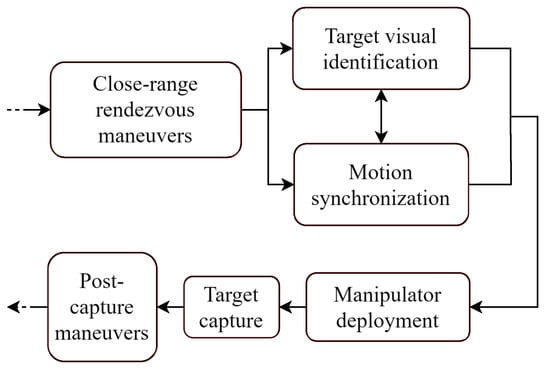
Figure 1
Open AccessArticle
Ascending Performance of Scientific Balloons with Buoyant Gas–Air Mixture Inflation for Designated Ceiling Height
by
Shenghong Cao, Yanchu Yang, Hangyue Zhang, Rong Zhao, Rongchen Zhu, Donghui Zhang and Lin Song
Aerospace 2024, 11(5), 340; https://0-doi-org.brum.beds.ac.uk/10.3390/aerospace11050340 - 25 Apr 2024
Abstract
This paper aims to investigate a new method that uses buoyant gas mixed with air to control the floating height of scientific balloons. Firstly, the static characteristics and thermophysical properties of mixed-gas balloons are analyzed. Subsequently, the inflation model and the thermal-dynamic coupled
[...] Read more.
This paper aims to investigate a new method that uses buoyant gas mixed with air to control the floating height of scientific balloons. Firstly, the static characteristics and thermophysical properties of mixed-gas balloons are analyzed. Subsequently, the inflation model and the thermal-dynamic coupled model are established. Furthermore, based on theoretical research, a GUI program is compiled to simulate the ascent of mixed-gas balloons. Finally, flight tests are conducted. As the balloon volume expands to the maximum, the vertical velocity begins to decay and eventually oscillates around 0 m/s, which is consistent with the simulation. In addition, there is a noticeable shift in which the balloon starts to float after climbing to the target altitude, and the difference values between the test and the simulation are less than 350 m. Moreover, the trajectory results are similar to the prediction, and the errors of the end position are less than 2.5 km in horizontal distance. Consequently, this paper provides guidance for balloon-designated ceiling height technology which can allow a single balloon system to be used for tests at multiple heights.
Full article
(This article belongs to the Special Issue Mission Analysis and Design of Lighter-than-Air Flying Vehicles (2nd Edition))
►▼
Show Figures
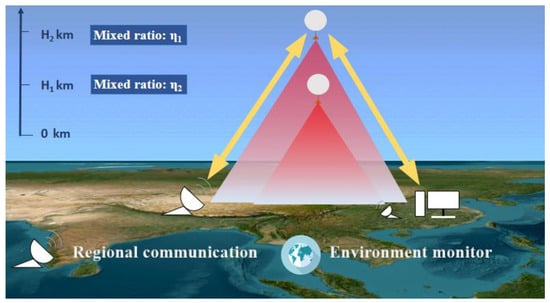
Figure 1
Open AccessArticle
A Weighted Feature Fusion Model for Unsteady Aerodynamic Modeling at High Angles of Attack
by
Wenzhao Dong, Xiaoguang Wang, Qi Lin, Chuan Cheng and Liangcong Zhu
Aerospace 2024, 11(5), 339; https://0-doi-org.brum.beds.ac.uk/10.3390/aerospace11050339 - 25 Apr 2024
Abstract
►▼
Show Figures
Unsteady aerodynamic prediction at high angles of attack is of great importance to the design and development of advanced fighters. In this paper, a weighted feature fusion model (WFFM) that combines the state-space model and neural networks is proposed to build an unsteady
[...] Read more.
Unsteady aerodynamic prediction at high angles of attack is of great importance to the design and development of advanced fighters. In this paper, a weighted feature fusion model (WFFM) that combines the state-space model and neural networks is proposed to build an unsteady aerodynamic model for the precise simulation and control of post-stall maneuvers. In the proposed model, the influences of the physical model on neural networks are considered and adjusted by introducing a standardization layer and a new weighting method. A long short-term memory (LSTM) network is used to fuse two mappings: one from flight states to aerodynamic loads, and the other from low-fidelity data to high-fidelity data. Data from wind tunnel oscillation experiments at high angles of attack using a new kind of wire-driven parallel robot and the traditional tail support are used for verifying the proposed aerodynamic model. The output of the WFFM is also compared with predictions from other models, such as the state-space model, single LSTM model, and feature fusion model not including a feature weighting layer. Results demonstrate improved accuracy of the proposed model in the interpolation and extrapolation tests. Furthermore, the WFFM is applied to the flight simulation of F-16 with different control inputs. Compared with conventional models, the WFFM shows improved accuracy and better generalization capability.
Full article
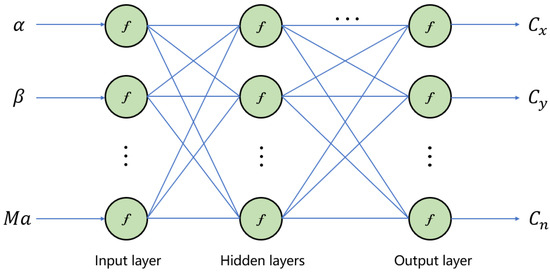
Figure 1
Open AccessArticle
Numerical Investigations on the Effects of Dome Cooling Air Flow on Combustion Characteristics and Emission Behavior in a Can-Type Gas Turbine Combustor
by
Chenzhen Ji, Wentao Shi, Enlei Ke, Jiaying Cheng, Tong Zhu, Chao Zong and Xinyan Li
Aerospace 2024, 11(5), 338; https://0-doi-org.brum.beds.ac.uk/10.3390/aerospace11050338 - 25 Apr 2024
Abstract
To meet the requirements of achieving higher efficiency and lower NOx pollution, the flame temperature in gas turbine combustors increases continually; thus, the effusion-cooling technology has been used to ensure the combustor liner remains within the allowed temperature, by which the combustion characteristics
[...] Read more.
To meet the requirements of achieving higher efficiency and lower NOx pollution, the flame temperature in gas turbine combustors increases continually; thus, the effusion-cooling technology has been used to ensure the combustor liner remains within the allowed temperature, by which the combustion characteristics and emission behavior are possibly influenced. In order to investigate the effects of dome cooling air flow on combustion characteristics and NOx emissions, three-dimensional combustion simulations for a swirl-stabilized can-type gas turbine combustor are carried out in this work by using the computational fluid dynamics (CFD) method. Through adjusting the ratio of the dome cooling air flow and the dilution cooling air flow, the characteristics of flow field, temperature distribution and NOx emissions under each work condition are analyzed. At different ratios of the dome-cooling air flow to the total air flow, the flow velocity field in the region near the center of the combustion chamber is not changed much, while the velocity field near the chamber wall shows a more significant difference. The temperature in the outer recirculation zone within the combustion chamber is effectively reduced as the dome cooling air flow increases. By analyzing the distribution characteristics of the concentration of OH*, it is demonstrated that the dome cooling air flow does not have a direct effect on the reaction of combustion. It is also found that as the ratio of the dome cooling air flow to the total air flow increases from 0 to 0.15, the value of the NOx emissions drops from 28.4 to 26.3 ppmv, about a 7.4% decrease. The distribution of the NOx generation rate in the combustion chamber does not vary significantly with the increasing dome cooling air flow. Furthermore, by calculating the residence time in different stages, when the the ratio of the dome cooling air flow to the total air flow varies from 0 to 0.15, the residence time in the pilot stage decreases obviously, from 42 ms to 18 ms. This means that reduction in residence time is the main factor in the decrease of NOx emissions when the dome cooling air flow increases.
Full article
(This article belongs to the Special Issue Progress in Turbomachinery Technology for Propulsion)
►▼
Show Figures
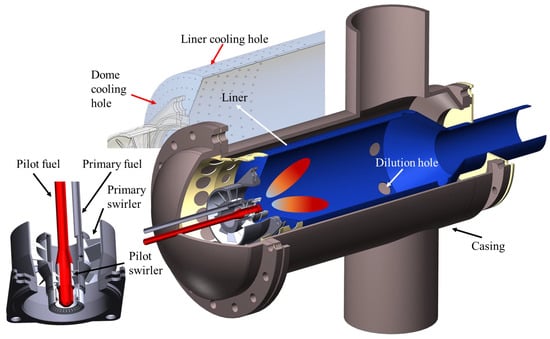
Figure 1
Open AccessArticle
Physical Modeling and Simulation of Reusable Rockets for GNC Verification and Validation
by
Stefano Farì, Marco Sagliano, José Alfredo Macés Hernández, Anton Schneider, Ansgar Heidecker, Markus Schlotterer and Svenja Woicke
Aerospace 2024, 11(5), 337; https://0-doi-org.brum.beds.ac.uk/10.3390/aerospace11050337 - 24 Apr 2024
Abstract
Reusable rockets must rely on well-designed Guidance, Navigation and Control (GNC) algorithms. Because they are tested and verified in closed-loop, high-fidelity simulators, emphasizing the strategy to achieve such advanced models is of paramount importance. A wide spectrum of complex dynamic behaviors and their
[...] Read more.
Reusable rockets must rely on well-designed Guidance, Navigation and Control (GNC) algorithms. Because they are tested and verified in closed-loop, high-fidelity simulators, emphasizing the strategy to achieve such advanced models is of paramount importance. A wide spectrum of complex dynamic behaviors and their cross-couplings must be captured to achieve sufficiently representative simulations, hence a better assessment of the GNC performance and robustness. This paper focuses on of the main aspects related to the physical (acausal) modeling of reusable rockets, and the integration of these models into a suitable simulation framework oriented towards GNC Validation and Verification (V&V). Firstly, the modeling challenges and the need for physical multibody models are explained. Then, the Vertical Landing Vehicles Library (VLVLib), a Modelica-based library for the physical modeling and simulation of reusable rocket dynamics, is introduced. The VLVLib is built on specific principles that enable quick adaptations to vehicle changes and the introduction of new features during the design process, thereby enhancing project efficiency and reducing costs. Throughout the paper, we explain how these features allow for the rapid development of complex vehicle simulation models by adjusting the selected dynamic effects or changing their fidelity levels. Since the GNC algorithms are normally tested in Simulink®, we show how simulation models with a desired fidelity level can be developed, embedded and simulated within the Simulink® environment. Secondly, this work details the modeling aspects of four relevant vehicle dynamics: propellant sloshing, Thrust Vector Control (TVC), landing legs deployment and touchdown. The CALLISTO reusable rocket is taken as study case: representative simulation results are shown and analyzed to highlight the impact of the higher-fidelity models in comparison with a rigid-body model assumption.
Full article
(This article belongs to the Special Issue GNC for the Moon, Mars, and Beyond)
►▼
Show Figures

Figure 1
Open AccessArticle
On-Board Image Enhancement on Remote Sensing Payload
by
Guo-Cheng Xu, Pei-Jun Lee, Trong-An Bui, Pei-Hsiang Hsu and Shiuan-Hal Shiu
Aerospace 2024, 11(5), 336; https://0-doi-org.brum.beds.ac.uk/10.3390/aerospace11050336 - 24 Apr 2024
Abstract
CubeSats are designed to optimize applications within the strict constraints of space and power. This paper presents an On-Board Image Enhancement technique for remote sensing payloads, focusing on achieving Auto White Balance (AWB) with limited resources and enhancing the capabilities of small/microsatellites. The
[...] Read more.
CubeSats are designed to optimize applications within the strict constraints of space and power. This paper presents an On-Board Image Enhancement technique for remote sensing payloads, focusing on achieving Auto White Balance (AWB) with limited resources and enhancing the capabilities of small/microsatellites. The study introduces hardware-based techniques, including histogram adjustment, De-Bayer processing, and AWB, all tailored to minimize hardware resource consumption on CubeSats. The integrated 1U CubeSat system comprises a sensor board, an Image Data Processor (IDP) unit, and onboard computing, with a total power consumption estimated at 2.2 W. This system facilitates image capture at a resolution of 1920 × 1200 and utilizes the proposed algorithm for image enhancement on remote sensing payloads to improve the quality of images captured in low-light environments, thereby demonstrating significant advancements in satellite image processing and object-detection capabilities.
Full article
Open AccessArticle
The Impact of In-Flight Acceleration Environments on the Performance of a Phase-Change Heat Exchanger Unit with Layered Porous Media
by
Ruoji Zhang, Jingyang Zhang and Jingzhou Zhang
Aerospace 2024, 11(5), 335; https://0-doi-org.brum.beds.ac.uk/10.3390/aerospace11050335 - 24 Apr 2024
Abstract
►▼
Show Figures
The Phase-Change Heat Exchanger Unit in Layered Porous Media (PCEU-LPM) is obtained through frozen pouring processing, and exhibits characteristics such as high thermal conductivity, high latent heat, and high permeability, making it suitable for dissipating heat in airborne electronic devices. This study numerically
[...] Read more.
The Phase-Change Heat Exchanger Unit in Layered Porous Media (PCEU-LPM) is obtained through frozen pouring processing, and exhibits characteristics such as high thermal conductivity, high latent heat, and high permeability, making it suitable for dissipating heat in airborne electronic devices. This study numerically investigates the impact of aircraft speed acceleration conditions, which lead to weightlessness or overload, on the performance of the PCHEU-LPM, with a particular focus on the influence of natural convection in the liquid-phase region. Initially, a microscale thermal analysis model is established based on the Navier–Stokes equation scanning electron micrograph to calculate the effective thermal conductivity and permeability of the PCHEU-LPM under different porosities. Subsequently, these parameters are incorporated into a macroscale thermal analysis model based on Darcy’s law, employing an average parameter approach. Using the macroscale thermal analysis model, temperature and velocity fields are computed under various porosities, acceleration magnitudes, and directions. The calculation results indicate that as the acceleration increases from α = 0 to α = 10 g, the interface temperature of the PCHTU-LPM decreases by approximately 5.2 K, and the temperature fluctuation decreases by 2.4 K. If the porosity of the PCHTU-LPM is increased from ε = 70% to ε = 85%, the influence of acceleration change on natural convection will be further amplified, resulting in a decrease in the interface temperature of the PCHTU-LPM by approximately 10.2 K and a decrease in temperature fluctuation by 5.8 K. When the acceleration direction is +z, the interface temperature of the PCHTU-LPM is at its lowest, while it is highest when the acceleration direction is −z, with a maximum difference of 15.4 K between the two. When the acceleration direction is ±x and ±y, the interface temperature lies between the former two cases, with the interface temperature slightly higher for ±y compared to ±x, with a maximum difference of 3.9 K between them.
Full article
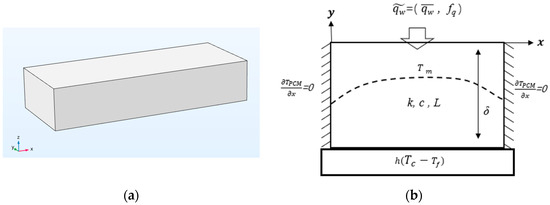
Figure 1
Open AccessArticle
Analysis of Flight Loads during Symmetric Aircraft Maneuvers Based on the Gradient-Enhanced Kriging Model
by
Shanshan Zhang, Zhiqiang Wan, Xiaozhe Wang, Ao Xu and Zhiying Chen
Aerospace 2024, 11(5), 334; https://0-doi-org.brum.beds.ac.uk/10.3390/aerospace11050334 - 24 Apr 2024
Abstract
►▼
Show Figures
The analysis of flight loads during symmetric aircraft maneuvers is an essential but computationally intensive task in aircraft design. The significant structural elastic deformation in modern aircraft further complicates this work, adding to the computational demands. Therefore, improving the analysis efficiency of flight
[...] Read more.
The analysis of flight loads during symmetric aircraft maneuvers is an essential but computationally intensive task in aircraft design. The significant structural elastic deformation in modern aircraft further complicates this work, adding to the computational demands. Therefore, improving the analysis efficiency of flight loads during maneuvers is crucial for accelerating design interactions and shortening the development cycle. This study explores a method for analyzing flight loads in the time domain during maneuvers of elastic aircraft by introducing a database of high-precision rigid-body aerodynamic loads. Furthermore, it combines the gradient-enhanced Kriging model to efficiently predict elastic flight loads during longitudinal maneuvers. The results indicate that the proposed surrogate-based method has high fitting accuracy with significantly improved computational efficiency, providing a new approach for efficient analysis of flight loads during aircraft maneuvers.
Full article
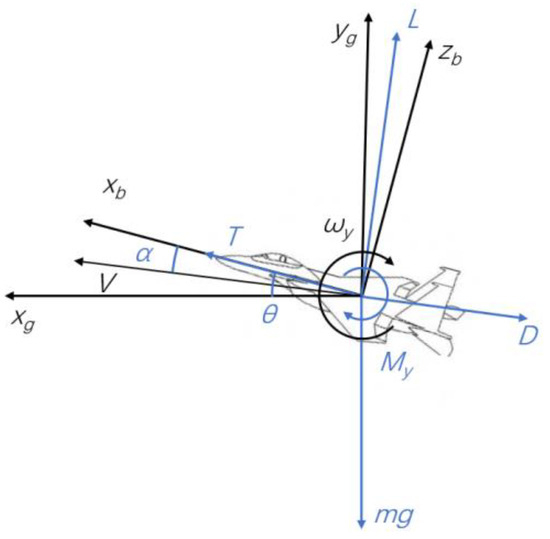
Figure 1
Open AccessArticle
Computational Mechanics for Turbofan Engine Blade Containment Testing: Fan Case Design and Blade Impact Dynamics by Finite Element Simulations
by
Víctor Tuninetti and Héctor Sepúlveda
Aerospace 2024, 11(5), 333; https://0-doi-org.brum.beds.ac.uk/10.3390/aerospace11050333 - 24 Apr 2024
Abstract
►▼
Show Figures
The harsh environment during airplane take-off and flights with complex operating conditions require a high dynamic and impact resistance capability of airplane engines. The design, development, and performance evaluation of new turbofan engines are generally performed through numerical simulations before a full-scale model
[...] Read more.
The harsh environment during airplane take-off and flights with complex operating conditions require a high dynamic and impact resistance capability of airplane engines. The design, development, and performance evaluation of new turbofan engines are generally performed through numerical simulations before a full-scale model or prototype experiment for certification. Simulations of fan blade containment tests can reduce trial–error testing and are currently the most convenient and inexpensive alternative for design; however, certification failure is always a risk if the calibration of material models is not correctly applied. This work presents a three-dimensional computational model of a turbofan for designing new engines that meet the certification requirements under the blade containment test. Two calibrated Johnson–Cook plasticity and damage laws for Ti64 are assessed in a simulation of a turbofan blade containment test, demonstrating the ability of the models to be used in the safe design of aircraft engine components subjected to dynamic impact loads with large deformations and adequate damage tolerance.
Full article
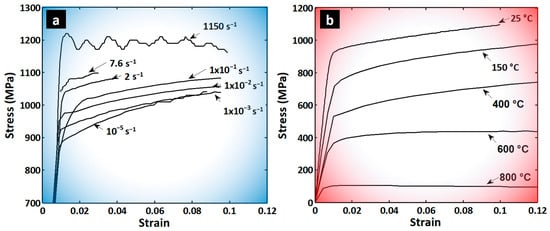
Figure 1
Open AccessArticle
Research on the Calculation Method of Propeller 1P Loads Based on the Blade Element Momentum Theory
by
Wenhui Yan, Xiao Tian, Junwei Zhou and Kun Zhang
Aerospace 2024, 11(5), 332; https://0-doi-org.brum.beds.ac.uk/10.3390/aerospace11050332 - 23 Apr 2024
Abstract
►▼
Show Figures
Aircraft propellers produce relatively large in-plane loads, called propeller 1P loads, during maneuvers such as turning, diving, and lifting, and these loads can negatively affect the flight and control of the aircraft. In order to study the change rule of 1P aerodynamic loads,
[...] Read more.
Aircraft propellers produce relatively large in-plane loads, called propeller 1P loads, during maneuvers such as turning, diving, and lifting, and these loads can negatively affect the flight and control of the aircraft. In order to study the change rule of 1P aerodynamic loads, in this paper, a mathematical model of the propeller 1P aerodynamic loads has been developed based on the blade element momentum theory. This mathematical model was then corrected using the Pitt–Peters incoming flow correction method, the Prandtl tip correction method, and the propeller root flow correction method. Based on this mathematical model, a calculation procedure for the propeller 1P aerodynamic loads was developed using MATLAB software, and the accuracy of the procedure was verified by comparing the results with CFD simulation results. Numerical simulations show that the results calculated based on the proposed mathematical model for the coefficients of thrust, power, bending moment, and the tangential force of the propeller have an error of less than ±6.00% compared to the CFD simulation results. For a small inflow angle, the coefficients of bending moment and tangential force of the whole propeller fluctuate in a small range. But, as the inflow angle increases, the fluctuation range of the aerodynamic characteristic parameters of the propeller increases and the fluctuation becomes more complicated. Through numerical calculations, it has been shown that the mathematical model presented herein is reliable and accurate. In addition, it greatly shortens the calculation time and improves the calculation efficiency. It is expected that the proposed model can provide a certain help for the strength design of the propeller structure and the study of the aerodynamic performance of the whole aircraft.
Full article
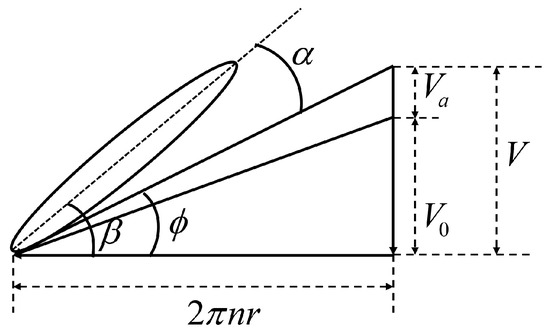
Figure 1
Open AccessArticle
Dynamic Response of Phase Change Heat Exchange Unit with Layered Porous Media for Pulsed Electronic Equipment
by
Ruoji Zhang, Jingyang Zhang and Jingzhou Zhang
Aerospace 2024, 11(5), 331; https://0-doi-org.brum.beds.ac.uk/10.3390/aerospace11050331 - 23 Apr 2024
Abstract
Effective heat dissipation challenges transient high-power electronic devices in hypersonic vehicle cabins. This study introduces a Phase Change Heat Exchange Unit with Layered Porous Media (PCHEU–LPM) employing pulsed heat flow at the top and forced convection at the bottom. The primary aim was
[...] Read more.
Effective heat dissipation challenges transient high-power electronic devices in hypersonic vehicle cabins. This study introduces a Phase Change Heat Exchange Unit with Layered Porous Media (PCHEU–LPM) employing pulsed heat flow at the top and forced convection at the bottom. The primary aim was a comparative parametric study analyzing the thermal response of the heating surface under pulsed heat flow conditions. The geometric model was generated using electron microscopy images of manufactured objects and the numerical model was established based on the enthalpy–porosity method. Numerical simulations explored amplitude and frequency effects on pulsed thermal excitation, evaluating temperature and phase fields. A comprehensive time-frequency transformation assessed the temperature response. The results indicated an initial decrease and subsequent increase in interface temperature fluctuation with pulse heat flux amplitude growth. Temperature field uniformity correlated with natural convection strength in two-phase and liquid-phase regions. At mid and low frequencies, the phase change process increasingly suppressed interface temperature fluctuations. Optimal pulse thermal excitation selection was crucial for minimizing temperature fluctuations while maintaining the interface temperature within the expected phase transition range. In conclusion, a novel design concept is posited herein, aiming to enhance surface temperature uniformity and broaden the applicability of electronic devices through the manipulation of porosity rates.
Full article
(This article belongs to the Section Aeronautics)
►▼
Show Figures
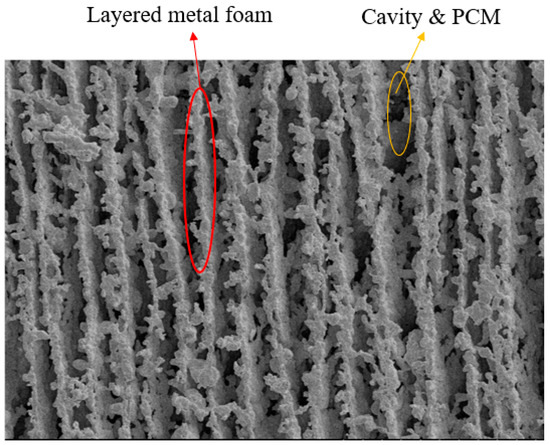
Figure 1
Open AccessArticle
Steering Mirror System with Closed-Loop Feedback for Free-Space Optical Communication Terminals
by
Chris Graham, David Bramall, Othman Younus, Amna Riaz, Richard Binns, Eamon Scullion, Robert T. Wicks and Cyril Bourgenot
Aerospace 2024, 11(5), 330; https://0-doi-org.brum.beds.ac.uk/10.3390/aerospace11050330 - 23 Apr 2024
Abstract
Precision beam pointing plays a critical role in free-space optical communications terminals in uplink, downlink and inter-satellite link scenarios. Among the various methods of beam steering, the use of fast steering mirrors (FSM) is widely adopted, with many commercial solutions employing diverse technologies,
[...] Read more.
Precision beam pointing plays a critical role in free-space optical communications terminals in uplink, downlink and inter-satellite link scenarios. Among the various methods of beam steering, the use of fast steering mirrors (FSM) is widely adopted, with many commercial solutions employing diverse technologies, particularly focusing on small, high-bandwidth mirrors. This paper introduces a method using lightweight, commercial off-the-shelf components to construct a custom closed-loop steering mirror platform, suitable for mirror apertures exceeding 100 mm. The approach involves integrating optical encoders into two off-the-shelf open-loop actuators. These encoders read the signal reflected on purposefully diamond-machined knurled screw knobs, providing maximum contrast between light and dark lines. The resulting steering mirror has the potential to complement or replace FSM in applications requiring a larger stroke, at the expense of motion speed. In the presented setup, the mirror tilt resolution achieved based on the encoder closed-loop signal feedback is 45
(This article belongs to the Special Issue Space Telescopes & Payloads)
►▼
Show Figures

Figure 1
Open AccessArticle
The Reliability Modeling and Evaluation of a Cusped Field Thruster When Undertaking a Gravitational Wave Detection Mission
by
Yu Chen, Jianing Wu, Yan Shen and Shuai Cao
Aerospace 2024, 11(5), 329; https://0-doi-org.brum.beds.ac.uk/10.3390/aerospace11050329 - 23 Apr 2024
Abstract
The propulsion system, particularly electric propulsion, holds immense significance in the context of gravitational wave detection missions. One of the key factors of a deep space exploration mission is the lifetime of the electric propulsion. Ensuring the high reliability of the propulsion system
[...] Read more.
The propulsion system, particularly electric propulsion, holds immense significance in the context of gravitational wave detection missions. One of the key factors of a deep space exploration mission is the lifetime of the electric propulsion. Ensuring the high reliability of the propulsion system is of paramount importance; however, achieving this is challenging in the absence of adequate failure data. Conducting ground tests for a thruster tends to encounter two limitations: a lack of failure data and time constraints. To address these challenges, we propose a semi-physics sputtering method that combines a physical erosion model with empirical processes. In this study, we focus on evaluating the lifespan of a cusped field thruster (CFT) for potential application in gravitational wave detection missions. Our analysis revolves around modeling non-conservative forces in a space environment and examining their impact on a thruster’s longevity. The results indicate that, in gravitational wave missions, the survival rate of a thruster’s lifespan at 8000 h is 0.75. At a constant voltage of 500 V, the maximum corrosion depth after 5000 h is 3.1 mm, while the minimum is 0.49 mm.
Full article
(This article belongs to the Special Issue Space Electric Propulsion Technology)
►▼
Show Figures
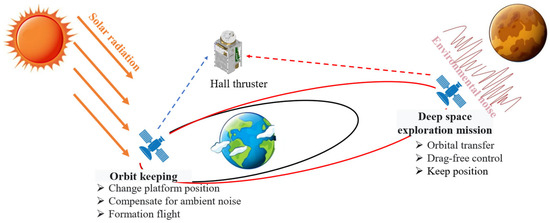
Figure 1
Open AccessArticle
Research on the Flow Mechanism of a High-Loading Biomimetic Low-Pressure Turbine Cascade
by
Hanliu Deng, Zhijun Lei, Xiaoqing Ouyang, Yuxiang He, Hang Yuan, Gang Li, Yanfeng Zhang, Xingen Lu and Gang Xu
Aerospace 2024, 11(4), 328; https://0-doi-org.brum.beds.ac.uk/10.3390/aerospace11040328 - 22 Apr 2024
Abstract
►▼
Show Figures
The biomimetic turbine has an excellent flow drag reduction ability and wide incidence adaptability, so it has the potential to achieve high efficiency within a wide working range of high-performance variable cycle engines. A biomimetic cascade that can broaden the effective working incidence
[...] Read more.
The biomimetic turbine has an excellent flow drag reduction ability and wide incidence adaptability, so it has the potential to achieve high efficiency within a wide working range of high-performance variable cycle engines. A biomimetic cascade that can broaden the effective working incidence angles was designed based on a high-loading low-pressure turbine cascade, and its flow mechanism and aerodynamic performance were studied using experimental and numerical methods under the incidences angle (i) of 0° to 15° and Reynolds number of 1.0 × 105. A series of counter rotating vortex pairs induced by the biomimetic cascade bring additional dissipation losses, but it accelerates the energy exchange between the boundary layer and mainstream, enhancing the dissipation of the pressure side leg of horseshoe vortex, and thus suppressing the flow separation and passage vortices. The undulating surface of biomimetic cascades can suppress the expansion of secondary flow in a spanwise direction in the end region, especially for large-scale separation under high incidence conditions. When i < 5°, the loss of biomimetic cascades is slightly higher than that of the original cascades, but the increase is only 0.5%; when i > 5°, the losses of biomimetic cascades are significantly reduced, with a maximum reduction of 70% at i = 15°.
Full article

Figure 1

Journal Menu
► ▼ Journal Menu-
- Aerospace Home
- Aims & Scope
- Editorial Board
- Reviewer Board
- Topical Advisory Panel
- Instructions for Authors
- Special Issues
- Topics
- Sections & Collections
- Article Processing Charge
- Indexing & Archiving
- Most Cited & Viewed
- Journal Statistics
- Journal History
- Journal Awards
- Society Collaborations
- Conferences
- Editorial Office
Journal Browser
► ▼ Journal BrowserHighly Accessed Articles
Latest Books
E-Mail Alert
News
26 March 2024
Meet Us at the Canadian Society for Mechanical Engineering International Congress and 31st Annual Conference of the CFD Society of Canada (CSME/CFD2024), 26–29 May 2024, Toronto, Canada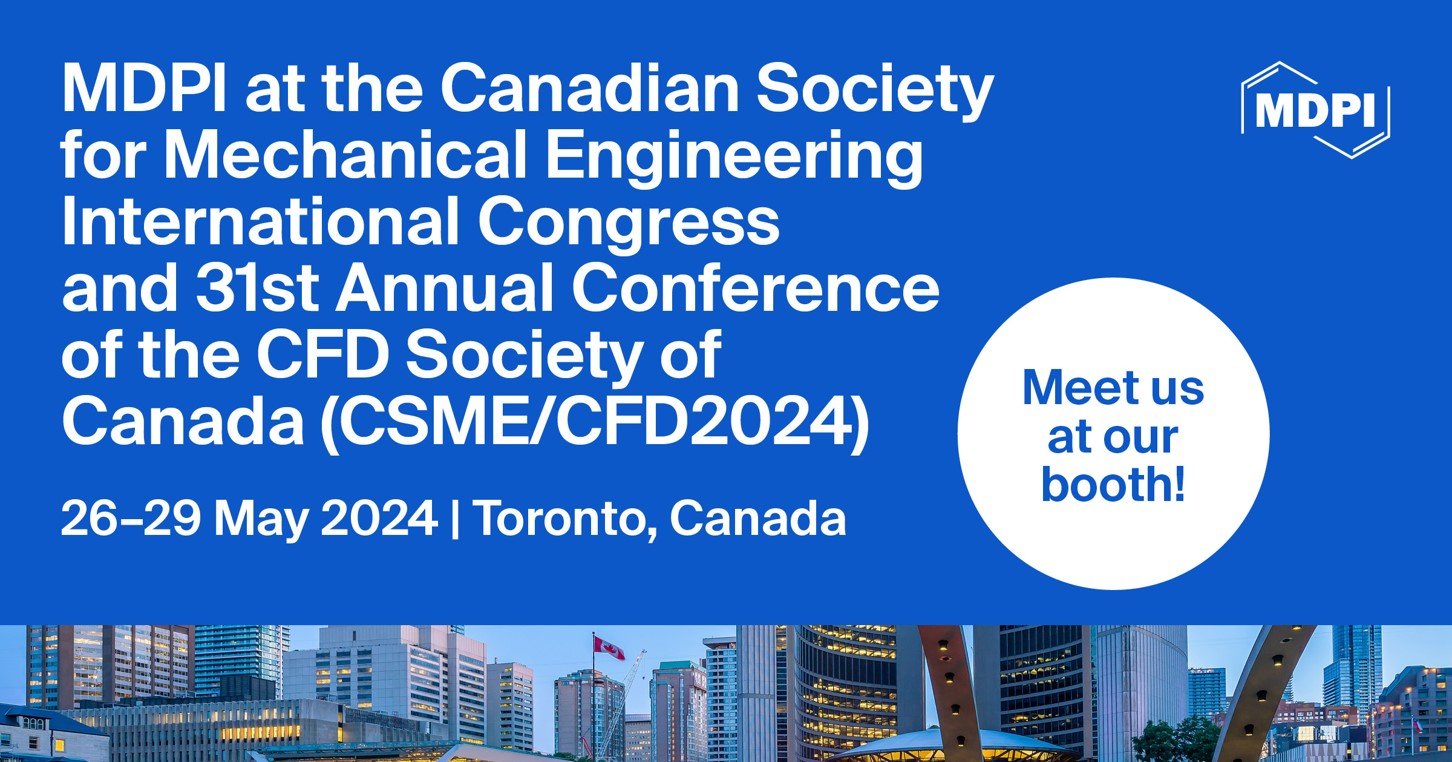
Meet Us at the Canadian Society for Mechanical Engineering International Congress and 31st Annual Conference of the CFD Society of Canada (CSME/CFD2024), 26–29 May 2024, Toronto, Canada

Topics
Topic in
Aerospace, Applied Sciences, Batteries, Energies, JMSE, Machines, Mathematics, Sensors
Uncertainty Quantification in Design, Manufacturing and Maintenance of Complex Systems
Topic Editors: Chen Jiang, Zhenzhong Chen, Xiaoke Li, Xiwen Cai, Zan YangDeadline: 30 September 2024
Topic in
Aerospace, Applied Sciences, Remote Sensing, Sensors, Smart Cities
Multi-Sensor Integrated Navigation Systems
Topic Editors: Hang Guo, Marcin Uradzinski, You LiDeadline: 31 December 2024
Topic in
Acoustics, Aerospace, Applied Sciences, JMSE, Remote Sensing, Vehicles, Modelling
Advances in Underwater Acoustics and Aeroacoustics
Topic Editors: Claudio Testa, Giovanni BernardiniDeadline: 31 March 2025
Topic in
Aerospace, Automation, Drones, Remote Sensing, Sensors
Target Tracking, Guidance, and Navigation for Autonomous Systems, 2nd Edition
Topic Editors: Won-Sang Ra, Shaoming He, Ivan MasmitjaDeadline: 20 August 2025

Conferences
Special Issues
Special Issue in
Aerospace
Morphing Aircraft: New Configuration and New Mechanism
Guest Editor: Haixin ChenDeadline: 30 April 2024
Special Issue in
Aerospace
Dynamics, Guidance and Control of Aerospace Vehicles
Guest Editors: Wanchun Chen, Wenbin Yu, Zhongyuan ChenDeadline: 21 May 2024
Special Issue in
Aerospace
Laser Propulsion Science and Technology
Guest Editor: John SinkoDeadline: 30 May 2024
Special Issue in
Aerospace
Advanced Technology of Distributed Space Systems: Formation-Flying, Swarms, and Constellations
Guest Editors: Shijie Zhang, Yafei Zhao, Tao Nie, Xiangtian ZhaoDeadline: 20 June 2024
Topical Collections
Topical Collection in
Aerospace
Avionic Systems
Collection Editors: Carlos Insaurralde, Francesco Dell’Olio
Topical Collection in
Aerospace
Latest Advancements in Aeronautics and Astronautics from Beihang University
Collection Editors: Daochun Li, Ting Li, Weizong Wang, Xiaoqiang Li, Zhenxun Gao, Zhihua Wang, Lizhan Bai, Zhan Tu
Topical Collection in
Aerospace
Space Systems Dynamics
Collection Editors: Mikhail Ovchinnikov, Dmitry Roldugin
Topical Collection in
Aerospace
Unmanned Aerial Systems
Collection Editors: David Anderson, Javaan Chahl, Michael Wing





